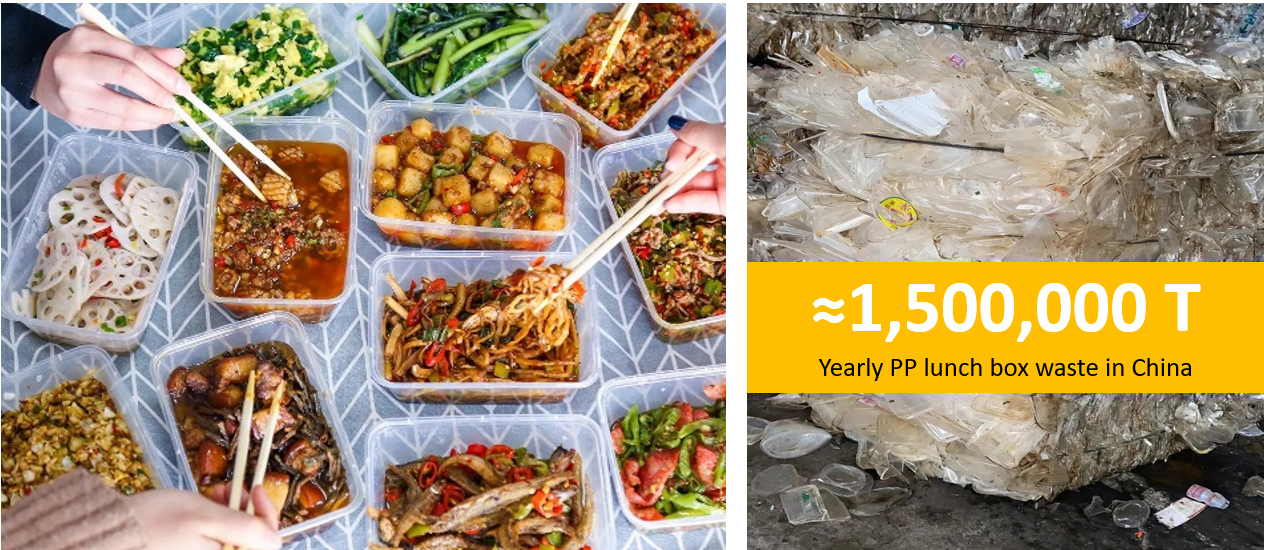| With the rise of the food delivery economy, food delivery has become a "necessity" in people's lives. China produces approximately 1.5 million tons of plastic lunch box waste each year, most of which is incinerated or landfilled, with less than 10% of the plastic lunch box waste being recycled. | |
| |
A large number of plastic lunch box waste have not been well utilized. Instead, they end up being landfilled or incinerated, placing a greater burden on the environment. |  |
In fact, after being recycled, discarded lunch boxes can be fully put into new production processes and achieve more innovative applications But by using recycled lunch boxes, the obtained granules will be easy to:
Does the transformation come to an end here? NO! In response to the problem, we have optimized the quality of rPP flakes to produce the rPP granules:
In this way, high-quality rPP granules from lunch box can be applied in a wider range of high-value applications. |  |

Our mission is to revolutionize plastic waste into a renewable resource. With a vision to ultimately create an infinitely sustainable planet, we transform polypropylene plastic into a versatile, replenishable resource through our process. changing our relationship with plastic. Our goal is for synthetic fiber production to play its part in the wider move towards climate-friendly sourcing. We want to encourage the use of recycled or regenerative materials and let no new virgin fossil-based fibers. |
|


